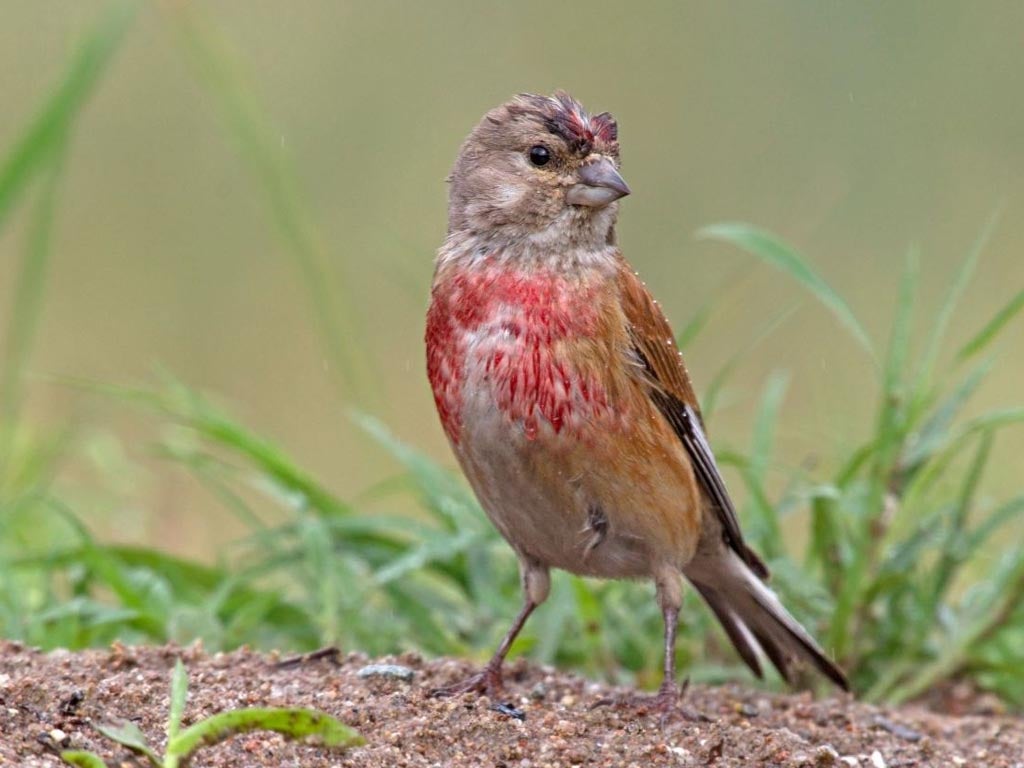Nature Studies: You’ve heard the song that features the linnet. But have you heard the linnet sing?
The linnet was prized by cage bird keepers for its melodious, liquid song

Do Cockneys still exist? You know, them geezers from dahn the old East End? No one seems to use the word any more, so maybe Cockneys are fading into history now, along with pie and mash, Blitz memories and cage birds…
I mention this last item because a cage bird features prominently in what was perhaps the best-known ditty in the lively Cockney music-hall repertoire, “My old man, said follow the van, and don’t dilly-dally on the way…” – the story of a couple doing a “moonlight flit” from their house to avoid paying the rent they owe to the landlord. It will probably be familiar to anyone over 50.
Anyone who knows it will remember that the wife, who is telling the story, relates that “off went the cart with our home packed in it, I walked behind with me old cock linnet”; but they might not have reflected on what this cock linnet was that the good woman in question was walking with.
It was, of course, the family pet – a linnet, a finch closely related to greenfinches and goldfinches, which was highly prized for its rich musical song. A century and more ago, when, it has been estimated, one household in two in Britain kept a cage bird (compared with perhaps one in 100 today), linnets were the most popular of all, because they were very numerous, and enormous numbers (alas) were taken from the wild.
However, the song for which they were so esteemed is something I was not properly familiar with until a week or so ago, when I went with a couple of friends on an orchid-hunting trip to Dorset, to that fringe of the Isle of Purbeck which now goes by the posh name of the Jurassic Coast, because its cliffs are so rich in fossils.
We were hunting our orchids in the straggly meadows above the sea, on a grand spring day of bright sunshine, stiff breezes and birds singing everywhere, especially whitethroats – there was a whitethroat in every hedge, shooting up in its song flight, uttering its scratchy song, then shooting back down again – as well as skylarks and willow warblers and stonechats, and then suddenly it was linnet time.
A male bird was perching on a wind-battered blackthorn bush, in his splendid full breeding plumage of a crimson breast and a crimson patch on his forehead (for reasons no one understands, the colours do not appear when the birds are kept in cages). We spotted him from about 70 yards away and as we watched, he began to sing. He started to let out a long, complex unending stream of liquid trills, and it was so endearing that we sat down to listen.
It felt like being at a concert: squatting on the grass, taking in the music. And there came to my mind the start of a verse by a long-forgotten poet, James Elroy Flecker (he died of TB, like Keats, at the age of 30, in 1915), which may not be sensational, but which I have always liked:
A linnet who had lost her way
Sang on a blackened bough in hell,
Till all the ghosts remembered well
The trees, the wind, the golden day.
You can easily Google the rest of it. Its appeal is not lessened for me by the fact that Flecker, along with everyone else a century ago, was not aware that only male birds sang (this did not become apparent until the discovery, by Eliot Howard in the 1920s, that male birds held and defended territory, and song was part of the defence); and it was enhanced by the fact that, with the sunshine mixing with the wind in the meadows above the shining blue sea, it did indeed feel like a golden day that this particular bird was singing into.
He sang for about 10 minutes, and Peter and Dominic and I listened the whole time, spellbound. You can see why, dahn the old East End, the Cockneys loved their cock linnets, in cages. But they’re even better in the open air.
These drones might need protection from the mob
It may be the biggest innovation in birdwatching since binoculars were invented in 1894 – the Royal Society for the Protection of Birds is embracing the drone. The remotely controlled “eye-in-the-sky” technology controversially used against insurgents by the US in its War on Terror, is being trialled by the RSPB as a way of keeping track of rare breeding birds such as bitterns, without observers entering their habitats such as dense reed beds.
A tea-tray-sized, six-rotor machine known as a hexacopter is currently being tested. “It’s at an early stage in the trials,” the RSPB says. I just hope it isn’t subject to “mobbing”, the mass attacks which some birds launch against predators such as falcons; in the most devastating case, fieldfares – winter thrushes from Scandinavia – engage in mass aerial pooing on their enemies. Even drones might struggle with that.
Twitter: @mjpmccarthy
Subscribe to Independent Premium to bookmark this article
Want to bookmark your favourite articles and stories to read or reference later? Start your Independent Premium subscription today.

Join our commenting forum
Join thought-provoking conversations, follow other Independent readers and see their replies